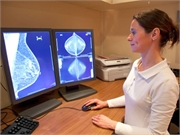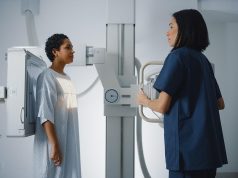New technology also tied to an overall increase in cancer detection rate
MONDAY, April 13, 2020 (HealthDay News) — Digital breast tomosynthesis (DBT) is associated with an overall decrease in recall rate and an increase in cancer detection rate, according to a study published online March 30 in JAMA Network Open.
Brian L. Sprague, Ph.D., from the University of Vermont in Burlington, and colleagues evaluated radiologists’ recall and cancer detection rates before and after beginning interpretation of DBT examinations. The analysis included 198 radiologists who interpreted 251,384 DBT and 2,000,681 digital mammography (DM) examinations from 2009 to 2017. The radiologists included 126 who interpreted DBT and 72 who exclusively interpreted DM examinations (to adjust for secular trends) during the study period.
The researchers found that of the radiologists who interpreted DBT examinations, 65.9 percent had unadjusted DM recall rates of no more than 12 percent before using DBT (median recall rate, 10.0 percent), while on DBT examinations, 76.2 percent had an unadjusted recall rate of no more than 12 percent (median recall rate, 8.8 percent). The adjusted risk for recall on screening examinations declined by 1.2 percent per year during the study period (95 percent confidence interval, 0.9 to 1.5 percent). Recall rates were 15 percent lower with DBT versus DM examinations interpreted before DBT use (relative risk, 0.85; 95 percent confidence interval, 0.83 to 0.87) when adjusting for examination characteristics and secular trends. For DBT, the unadjusted cancer detection rate was 5.3 per 1,000 examinations versus 4.7 per 1,000 examinations with DM interpreted before DBT use (adjusted risk ratio, 1.21; 95 percent confidence interval, 1.11 to 1.33).
“Radiology practices should audit radiologist DBT screening performance and consider additional DBT training for radiologists whose performance does not improve as expected,” the authors write.
Copyright © 2020 HealthDay. All rights reserved.








